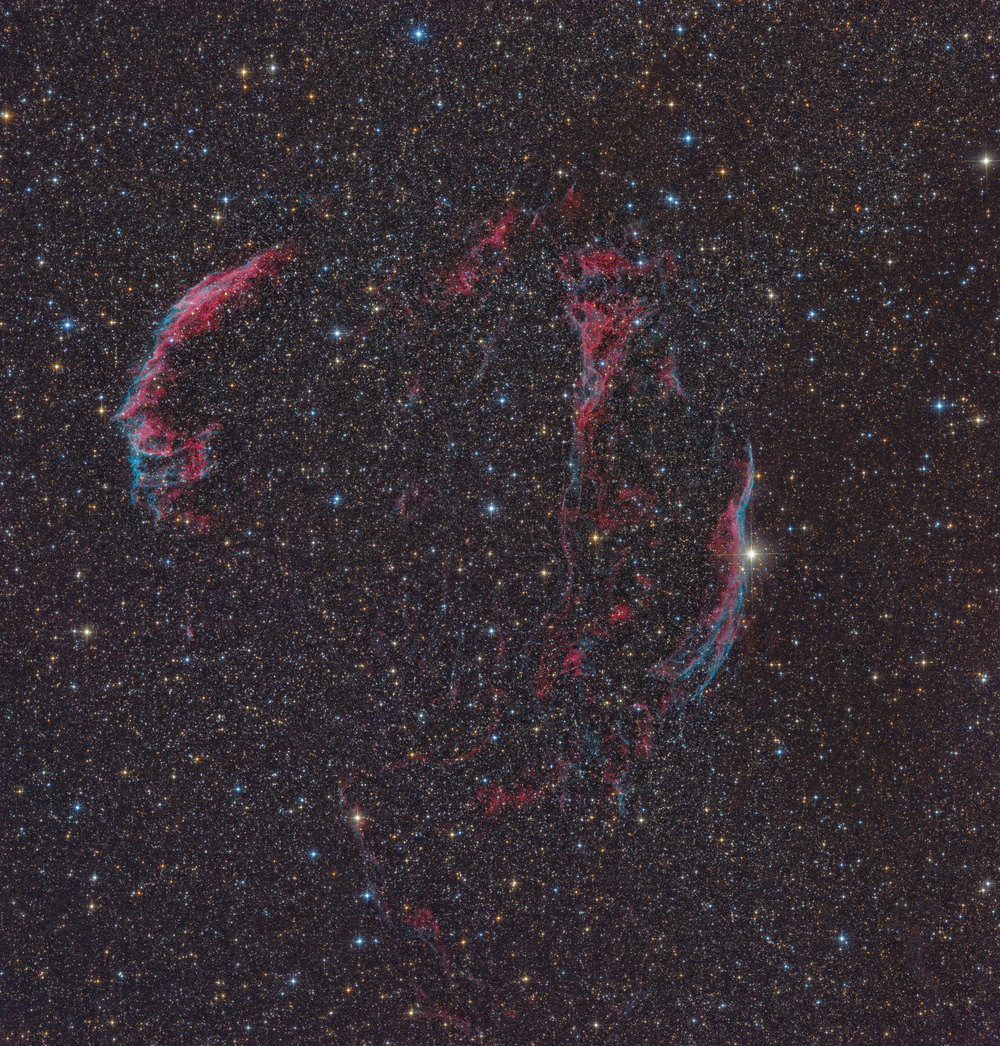Cirrus Nebula (Cygnus Loop, Veil Nebula)

MouseOver for object identification, Click on image for a zoomable version
|
Location / Date |
Zellerndorf, August 2012 |
|
Telescope / Mount / Guiding |
5" f5 Skywatcher Newtonian with ASA 0.73 Reducer Corrector (474mm focal length, f3.65) |
|
Camera / Exposure |
Canon EOS 500Da |
|
Processing |
Theli, Fitswork, PixInsight, Photoshop |
|
Notes |
The Veil Nebula (Cygnus Loop, Cirrus Nebula) is a cloud of heated and ionized gas and dust in the constellation Cygnus. It constitutes the visible portions of the Cygnus Loop, a large but relatively faint supernova remnant. The source supernova exploded some 5,000 to 8,000 years ago, and the remnants have since expanded to cover an area roughly 3 degrees in diameter (about 6 times the diameter, or 36 times the area, of the full moon). In modern usage, the names Veil Nebula or Cirrus Nebula generally refer to all the visible structure of the remnant, or even to the entire loop itself. The structure is so large that several NGC numbers were assigned to various arcs of the nebula. There are three main visual components: The Western Veil, consisting of NGC 6960 (the "Witch's Broom") near the foreground star 52 Cygni; The Eastern Veil, whose brightest area is NGC 6992, trailing off farther south into NGC 6995 and IC 1340; and Pickering's Triangle (or Pickering's Triangular Wisp), brightest at the north central edge of the loop, but visible in photographs continuing toward the central area of the loop. NGC 6974 and NGC 6979 are luminous knots in a fainter patch of nebulosity on the northern rim between NGC 6992 and Pickering's Triangle. |